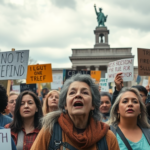**Hi Fly Outpaces Gender Diversity Targets, Setting New Standards for Aviation**
Hi Fly, a key player in the global aviation industry, has demonstrated an impressive commitment to gender diversity by surpassing the benchmarks set by the International Air Transport Association’s 25by2025 initiative. This article examines how these achievements, underscored by strategic recruitment and talent development, have potential implications for both the aviation community and society at large.
A Leap Forward in Gender Diversity
Hi Fly, known for its expertise in widebody wet leasing, recently announced it has achieved 31% female representation in senior leadership roles and 43% across its total workforce. These figures exceed the IATA’s 25by2025 targets, which are voluntary benchmarks aimed at enhancing gender balance within the aviation sector.
Since committing to this initiative at the IATA Wings of Change Europe event in 2019, Hi Fly has focused on implementing inclusive recruitment practices and nurturing talent development strategies. The goal has been not just to meet but to surpass gender diversity targets, creating a more equitable work environment. As a reflection of these efforts, women’s representation in leadership positions jumped from 23% to 31% by 2025.
The Broader Context
The 25by2025 campaign is the brainchild of IATA and aspires to address the gender imbalance pervasive across the industry. It calls on participating airlines to enhance the presence of women in senior positions and within IATA governance, while also ensuring transparency via public reporting on diversity metrics. By taking this commitment to heart, Hi Fly not only fulfills a critical industry standard but also sets an inspiring precedent for other organizations.
Antonios Efthymiou, CEO of Hi Fly, emphasized the transformative impact of these results: “Our ongoing belief that diversity enhances both performance and workplace culture is reflected in these statistics. We’re not just reaching numbers; we’re witnessing steady, inclusive progress, and this is something we will continue to focus on.”
Local Impact and Community Interest
In the broader community context, such strides in gender equity within a prominent company like Hi Fly can have significant ripple effects. Firstly, it highlights the effectiveness of diversity and inclusion (D&I) initiatives as a tool for organizational and cultural enhancement. Additionally, this success story may motivate local industries and businesses within other sectors to adopt similar strategies.
For the United States, where discussions about gender equity in professional settings are ongoing, Hi Fly’s achievements serve as a tangible benchmark. In localities like the Rio Grande Valley, widespread efforts to promote diversity reflect aspirations to align economic practices with values of inclusion and equality.
Dr. Linda Gonzalez, a gender studies expert at the University of Texas, points out the potential of such initiatives: “When major players like Hi Fly take decisive steps toward gender balance, it redefines what’s achievable and sets new standards. It invites other sectors to reassess their own practices, which cumulatively benefits the broader community.”
Potential Implications and the Way Forward
Now that Hi Fly has exceeded its initial goals, the company plans to continue evolving its strategies. The focus will shift towards maintaining this progress and driving long-term equity across operations. This ongoing commitment could shape future industry practices and foster a collective movement toward sustainable gender equity in aviation.
This progress, as articulated by Mr. Efthymiou, is not merely a corporate milestone but a vital component of mirroring “the world we serve.” It strengthens the company’s capability to represent the diversity of their clientele, creating a more relatable and inclusive business model.
However, the scaling of such initiatives requires prudent management to avoid potential pitfalls, such as tokenism or subsequent neglect of other aspects of diversity. Transparency and continuous improvement through feedback and adaptive strategies will be crucial for the sustained success of Hi Fly’s efforts.
Balanced Perspectives and Community Involvement
While Hi Fly’s story is largely positive, it is crucial to consider a balanced perspective. Not all attempts at improving diversity yield immediate results, and a range of factors can influence outcomes. Community members, experts, and critics will need to collaborate to ensure initiatives are carried forward in a manner that truly serves the broader community.
Importantly, the Hi Fly case exemplifies a scenario where a fundamental social cause—gender diversity—translates into palpable business benefits. As communities and industries digest these developments, there’s room for discussion about how similar models can be implemented locally.
To encourage community participation and awareness, Hi Fly and similar companies might engage in dialogues through forums, workshops, and partnerships with educational institutions. These interactions can provide insights into how gender diversity initiatives can yield community-wide advancements.
Ultimately, Hi Fly’s achievement in workforce gender diversity is a step in the right direction. While it marks progress, it serves as a call to action for similar initiatives within the aviation industry and beyond. As Hi Fly charts this course, it reinforces the importance of Woke News and other platforms in covering and promoting such influential narratives, thus maintaining a local impact while engaging residents in this journey of change.
Residents interested in learning more about Hi Fly’s ongoing diversity initiatives and their impact on the industry are encouraged to follow updates from Aviation Business News, which continues to spotlight these essential stories.







